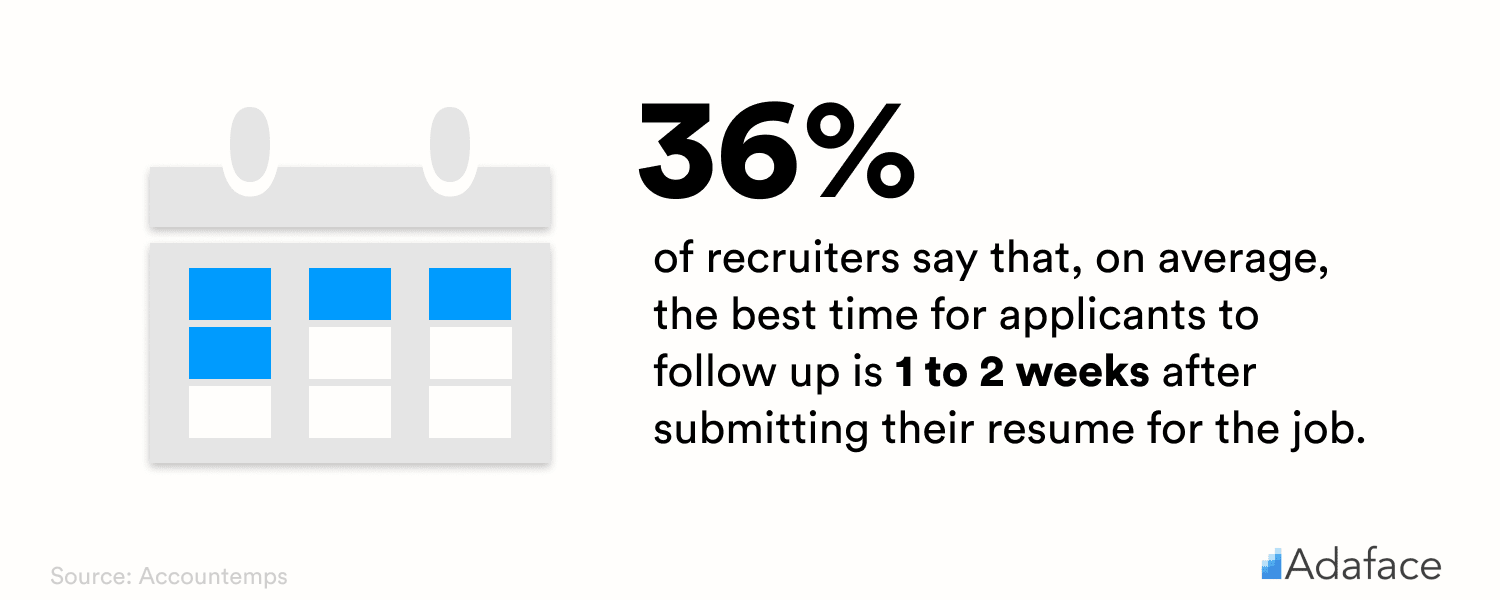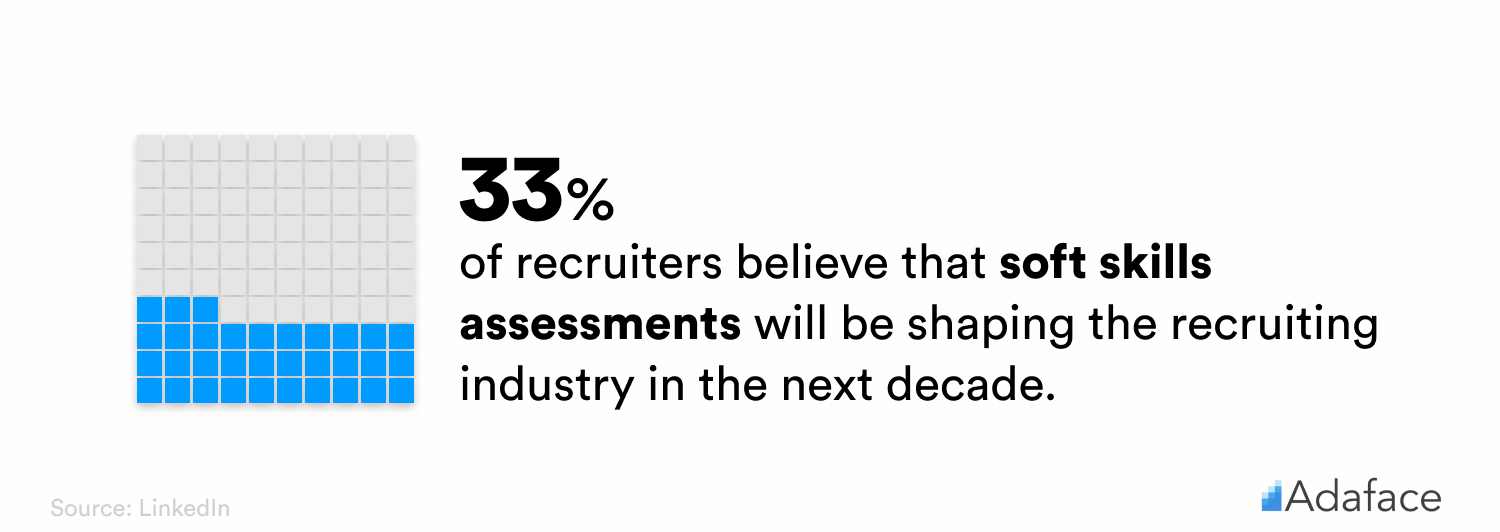Top 75 HR and Recruiting Statistics
The ultimate list of resources and statistics that will help recruiters and hiring managers tailor an approach that will catch the eye of top talent every year.


Does your talent acquisition strategy need an upgrade? As the decision to hire an individual for a role becomes more driven by data and technology, it is important for employers and hiring managers to look beyond their own recruitment data and be up-to-date with the hiring trends.
Top 75 HR and Recruiting Statistics
We have compiled a massive list of the Top HR and Hiring Statistics that you need to know to ensure successful hiring!
This massive list of statistics is broken up into 15 recruiting related topics:
- Talent shortage statistics
- Changing jobs statistics
- Bad hire statistics
- Job search statistics
- Job advertising statistics
- Social recruiting statistics
- Candidate sourcing statistics
- Candidate experience statistics
- Hiring assessments statistics
- Interviewing statistics
- Diversity hiring statistics
- Onboarding statistics
- Multigenerational workforce statistics
- Employee benefits statistics
- Employer branding statistics
Talent Shortage Statistics
- 75% of HR professionals believe that there is a skills gap among their applicants.
Source: SHRM - By 2030, there will be a shortage of human talent, globally amounting to more than 85 million people. This number is almost equivalent to the entire population of Germany. If this shortage is left unchecked, then it could result in a loss of $8.5 trillion in unrealized annual revenues.
Source: Korn Ferry - 45% of employers are struggling to fill roles in their organization, out of which 27% say that the applicants lack either hard or soft skills.
Source: Manpower Group - 51% of talent management professionals say that the global education system has done nothing to address the skill shortage issue.
Source: SHRM

- 30% of recruiters believe that candidates do not possess the right set of soft skills, making it harder for organizations to hire them. The most important soft skills are problem-solving, critical thinking, and communication.
Source: SHRM - According to the 2014 Whitehouse Report, by the year 2020, more than 50% of STEM jobs would be in computer science-related fields. If this trend continues, then 1.4 million computer science-related jobs would be available in the next decade, with only 400,000 computer science graduates to apply for such jobs.
Source: The White House
Changing Jobs Statistics
- 80% of employees are unhappy in their current job, making it the number 1 reason for them to quit.
- An average person will change their job 5-7 times during their professional life.
- Nearly 64% of employees may leave their current jobs in the year 2021.
Source: Achievers - Because of the COVID pandemic, 22% of UK workers realize that their current position isn’t for them.
Source: Total Jobs
Bad Hire Statistics
- The average cost of one bad hire can cost an organization nearly $15,000!
Source: Career Builder - On the contrary, the average cost of losing a good hire can cost an organization nearly $30,000!
Source: Career Builder - Nearly 74% of employers say that they have hired the wrong candidate for a job.
Source: Career Builder
Job Search Statistics
- On average, job seekers spend 11 hours a week searching on employment sites for jobs.
Source: Career Builder - 66% of candidates will wait less than 2 weeks to hear back from the recruiter before moving on to another opportunity.
Source: Career Builder - 36% of recruiters say that, on average, the best time for applicants to follow up is 1 to 2 weeks after submitting their resume for the job.
Source: Robert Half - Only 44% of candidates hear from employers within a couple of weeks of applying, while 37% of them get a reply within one week, and only 4% of candidates receive a reply within one day.
Source: Indeed

Job Advertising Statistics
- Mobile-friendly job applications receive more number of applicants, nearly 11.6% when compared to the job ads that are not advertised as such.
Source: Glassdoor - Job ads that include a salary range for the job role got 75% more engagement than the job ads that don’t.
Source: Stack Overflow - 51% of job seekers are more attracted to an organization that had posted job listings with visual elements (such as images, videos, or both) than to others that didn’t.
Source: Software advice - 35% of applicants prefer to apply to jobs from their phones.
Source: Glassdoor - The top factors that are likely to attract job seekers include attractive benefits (48%), convenient commute (47%), and relatively high salary (46%).
Source: Glassdoor - 59% of applicants visit the company website and career site after discovering a job opportunity.
Source: LinkedIn
Social Recruiting Statistics
- 62% of professionals utilize social media channels to evaluate the employer brand of a company.
- 70% of recruiting managers say they have successfully hired candidates using social media.
Source: Betterteam - 79% of job seekers use social media in their job search.
Source: Career Builder

- 84% of organizations use social media while recruiting.
Source: SHRM - 82% of passive job candidates are recruited by organizations that use social media for recruitment.
Source: SHRM
Candidate Sourcing Statistics
- If hiring in volume, a good career website is 2 times more effective than job boards.
Source: Jobvite - 64% of HR professionals award monetary bonuses to employees as incentives to get more quality referrals.
Source: Jobvite - 66% of recruiters use Indeed as their online job board, while only 24% and 6% prefer LinkedIn and Glassdoor respectively.
Source: SilkRoad
Candidate Experience Statistics
- 60% of applicants will abandon the recruitment process if it is too complex and stressful.
Source: Zety - 72% of job seekers are likely to share their bad experiences online or with someone directly.
Source: CareerArc - Nearly 63% of candidates report being dissatisfied with the level of communication from most employers after applying.
Source: Talentegy - Only 18% of businesses make use of employee testimonials on their LinkedIn company page.
Source: Beamery - 15% of applicants with a positive hiring experience put more effort into the job.
Source: Officevibe - Companies that took the time to develop a positive candidate hiring experience reported a 70% improvement in the quality of hires.
Source: Glassdoor
Read also:
- How to attract the best technical talent
- Conversational assessments for a positive candidate experience
- Remote Hiring Playbook
Hiring Assessments Statistics
- 82% of businesses are currently using some form of pre-employment tests in their recruitment process.
Source: SHRM - 35% of recruiters believe that soft skills assessments will be shaping the recruiting industry in the next decade.
Source: LinkedIn - Recruiting managers who utilize pre-hire assessments in their recruitment process report 36% more satisfaction with their final decision than those who don’t.
Source: Aberdeen - 75% of businesses use behavioral interview questions to gauge soft skills.
Source: G2.com - Organizations that use pre-employment assessment tests report a lower turnover rate, nearly 39%.
Source: Aberdeen

Read also:
- Ultimate guide to pre-employment aptitude tests
- The ultimate guide to pre-employment testing
- All about coding tests
Interviewing statistics
- 74% of recruiting professionals make use of structured interviews. Structured interviews are an excellent way to screen candidates by asking them a set questions that helps you collect useful information from each interviewee that you can compare with other candidates' responses.
Source: LinkedIn - For 50% of candidates, changes in the interview schedule is one of the biggest cause of frustration during the interview process.
Source: Glassdoor
Read also:
- Job interview statistics
- Screening Candidates: A How-To Guide For Recruiters
- How to interview software engineers
Diversity Hiring Statistics
- 65% of millennial job seekers value company culture when compared to 52% of people of ages 45 and above.
Source: Glassdoor - Organizations with diverse management have 19% higher revenue when compared to those who have below-average leadership diversity.
Source: BCG - Only 25% of organizations set gender diversity targets while creating their hiring strategy.
Source: Women in the Workplace - 78% of HR professionals say that diversity in the workplace is impacting how they hire.
Source: LinkedIn
Onboarding Statistics
- Only 12% of employees would agree that their company does a great job of onboarding new hires.
Source: Gallup - Effective employee onboarding experience can improve new hire retention by 82% and productivity by over 70%.
Source: Glassdoor - 55% of companies report that they don’t measure the effectiveness of their onboarding programs.
Source: BusinessWire - Almost 76 % of HR leaders accept that onboarding practices are underutilized at their organization.
Source: BusinessWire - 53% of HR professionals say employee engagement increases when onboarding is improved.
Source: SilkRoad - 89% of employees who received effective onboarding felt strongly integrated into the company culture, in comparison to 59% of those who received ineffective onboarding.
Source: BambooHR
Multigenerational Workforce Statistics
- More than 86% of companies believe that a multigenerational workforce is valuable to their success and growth.
Source: Toptal - Nearly 3 out of 4 women notice ageism happening in the workplace.
Source: AARP - 58% of employees in their fifties or above have noticed age bias first hand.
Source: Brandon Gaille - Only 50% of millennials plan to be with their organization one year from now.
Source: Gallup - By the year 2021, Millennials will make up over a third of the global workforce.
Source: Manpower Group - 66% of millennials think of leaving their company by 2021.
Source: Glassdoor - Only 4% of HR managers think they know how to manage millennials.
Source: Glassdoor
Employee Benefits Statistics
- More than 40% of millennial employees accept job offers based on the company's health and wellness benefit package.
Source: CMD Recruitment - 60% of job seekers report that the benefits and perks offered by an organization are a major factor in considering whether to accept a job offer.
Source: Glassdoor - Employees with a good work-life balance are 10% more likely to stay at their companies than those who don’t.
Source: HR Drive - 51% of employers believe that using benefits for employee retention will become even more important in the next 3 to 5 years.
Source: Metlife
Employer Branding Statistics
- 59% of recruiting professionals are investing more in employer brand.
Source: LinkedIn - Organizations with a strong employer brand see 50% more qualified talents and take 1-2 times faster to hire.
Source: LinkedIn - 68% of millennial job seekers use social media specifically to evaluate the employer’s brand.
Source: CareerArc - HR professionals say that strong employer branding leads to a 43% drop in recruitment costs.
Source: LinkedIn
Wrapping up
As an employer, building a talent acquisition strategy that combines a positive workplace culture, an efficient hiring process, and great employer branding can turn out to be quite stressful. As we see drastic changes in how people and organizations work, it becomes imperative that you apply these statistics to recruit potential talent based on your organization’s needs.

